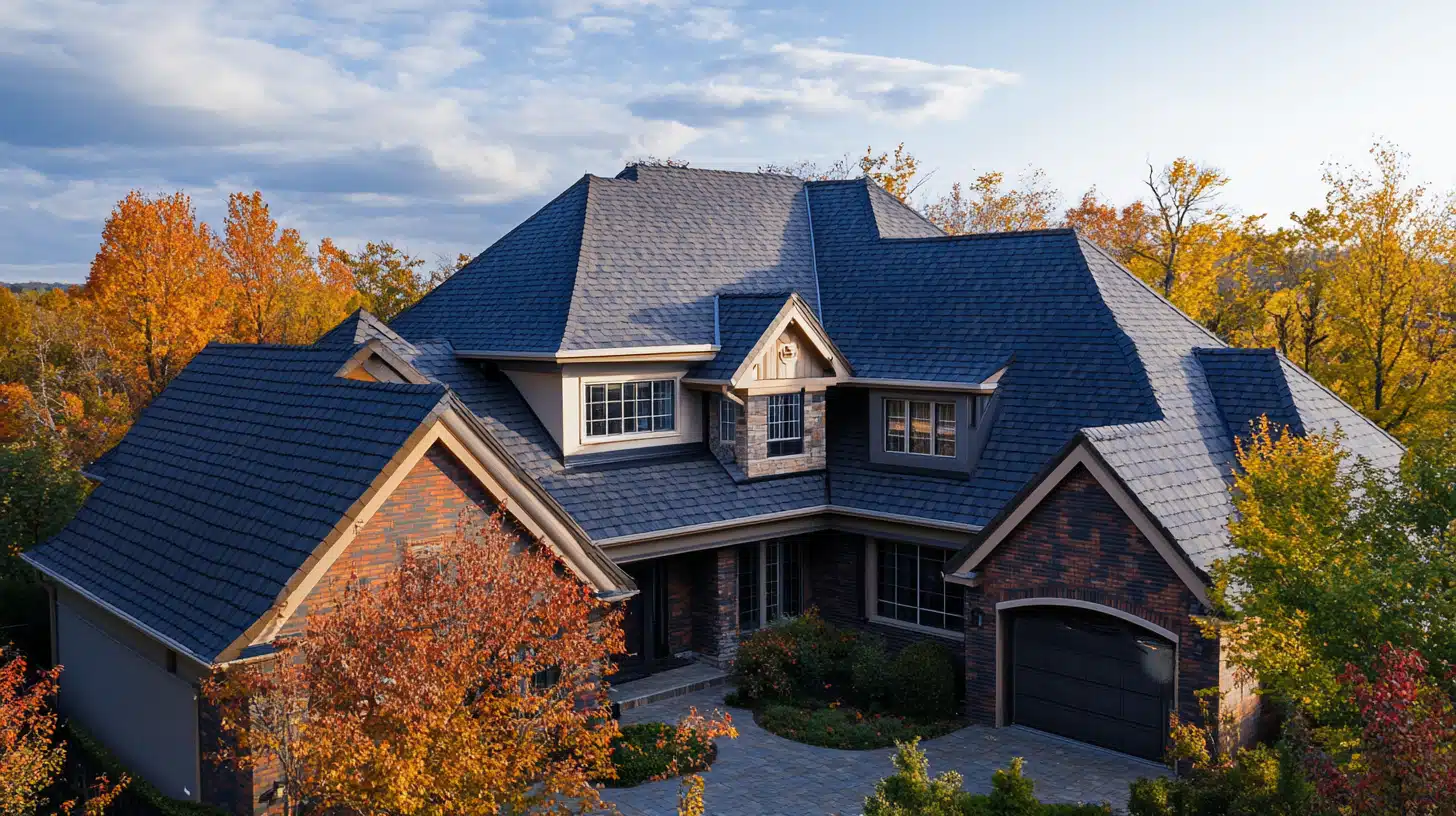Roofing plays a crucial role in defining the overall character of a building. From sleek modern designs to traditional styles, the choice of roofing materials and colors can significantly influence a property’s aesthetic appeal. A well-chosen roof not only protects the structure but also enhances its visual impact, making it stand out in its environment.
The appearance of a roof can complement various architectural elements, creating harmony throughout the building’s design. High-quality roofing options, such as metal, tiles, or asphalt shingles, can elevate a property’s exterior, showcasing the owner’s taste and commitment to maintaining their space.
Incorporating unique roofing features, such as dormers, skylights, or green roofs, can further personalize a building while contributing to its beauty. By prioritizing the roofing aspect, property owners can achieve a stunning visual effect that adds lasting value to their investment.
Historical Evolution of Roofing Aesthetics
Roofing has evolved significantly throughout history, reflecting cultural trends, technological advances, and aesthetic preferences. In ancient civilizations, such as the Egyptians and Greeks, roofs were primarily functional, crafted from readily available materials like straw and clay.
As architectural styles developed, the aesthetics of roofs gained prominence. The medieval period introduced steeply pitched roofs in Europe, often adorned with decorative elements like finials and weather vanes. This shift highlighted the importance of visual appeal alongside functionality.
The Renaissance brought a renewed focus on symmetry and classical design. Roofs became an integral part of a building’s overall aesthetic, with ornate tiles and domes representing wealth and status. This tradition carried into the Baroque and Rococo periods, where elaborate roofing designs became a hallmark of grand architecture.
In the 20th century, industrialization led to new materials such as asphalt shingles, metal, and concrete. These innovations allowed for more diverse roofing styles, including minimalist designs. Companies like Universal Roofing & Exteriors emerged, offering a range of options to enhance both functionality and beauty.
Today, sustainable materials and modern technologies shape roofing aesthetics. Green roofs, for example, not only provide insulation but also contribute to urban aesthetics. This evolution underscores the continuous interplay between practicality and design in roofing throughout history.
Design Principles in Roofing
Effective roofing design significantly contributes to a building’s overall aesthetic appeal. Key considerations include color choices and material selection, as well as the shape of the roof. Each element plays a distinct role in crafting a harmonious visual impact that complements the architectural style of a building.
Color Theory and Roofing Materials
Color selection is vital in roofing as it influences both appearance and energy efficiency. Lighter colors reflect sunlight, helping to keep buildings cool, while darker hues absorb heat.
Materials also play a pivotal role. For example, metal roofing comes in various colors and finishes, offering design flexibility. Asphalt shingles can mimic the appearance of wood or slate, enhancing aesthetic appeal.
A cohesive color palette that aligns with the building’s exterior creates a unified look. Brands like CertainTeed and Tamko provide options that support various architectural styles, allowing for a personalized touch.
Unique roof shapes, such as gables or hip roofs, can add character and depth to a structure. Green roofs, featuring vegetation, not only promote sustainability but also introduce a natural element that softens urban landscapes.
Roof Shape and Visual Impact
Roofing plays a crucial role in enhancing the overall aesthetics of a building, serving as the crowning feature that can significantly influence its visual appeal. The choice of roofing materials, colors, and styles can complement architectural designs, creating a cohesive look. For instance, sleek metal roofs can provide a modern touch, while traditional shingles may evoke a classic charm.
Tthe shape of a roof greatly influences a building’s character and overall design. Various styles, such as gable, hip, and flat roofs, each convey different aesthetics.
Gable roofs, for instance, are often associated with traditional designs, adding a classic charm. In contrast, flat roofs yield a modern, minimalist look, suitable for contemporary structures.
Texture and pitch are essential as well. A steeper pitch can enhance visual drama, while a lower pitch lends a subtle, understated elegance. Incorporating elements like dormers or skylights can further enrich the roof’s appearance, adding dynamic visual interest.
Innovative Roofing Materials and Techniques
\The integration of innovative roofing materials and techniques significantly affects building aesthetics, functionality, and sustainability. These advancements cater to both aesthetic appeal and environmental considerations.
Sustainable Roofing Solutions
Sustainable roofing materials, such as recycled shingles and green roofs, are gaining prominence. These options not only enhance the visual appeal but also contribute to energy efficiency. Green roofs, composed of vegetation, provide insulation and reduce urban heat while helping with stormwater management.
Companies like Universal Roofing & Exteriors offer eco-friendly roof materials like metal and slate, both of which boast durability and minimal maintenance. Using sustainable materials can also attract environmentally-conscious clients, boosting market competitiveness for contractors.
Decorative elements like dormers, chimneys, and rooflines can enhance visual interest and contribute to the building’s personality. Ultimately, thoughtful roofing design not only protects the structure but also elevates its aesthetic value, making it more appealing to residents and visitors alike. Investing in quality roofing can transform a building into a standout architectural statement.
Technological Advancements in Roofing
Technological innovations are also reshaping roofing. Incorporation of solar tiles allows buildings to harness renewable energy while maintaining style. Advanced weather-resistant materials improve longevity, making roofs more reliable against harsh conditions.
Smart roofing company systems like in Universal Roofing & Exteriors, can now integrate sensor technology to monitor conditions in real-time. These systems can provide data on temperature, humidity, and even potential leaks, aiding in preventative maintenance. The combination of these technologies not only supports building functionality but also enhances overall aesthetics through sleek designs.
Design principles in roofing focus on functionality, aesthetics, and sustainability. Key considerations include selecting appropriate materials for durability and climate, ensuring proper drainage to prevent water accumulation, and integrating styles that complement the building’s architecture. Energy efficiency can be enhanced through reflective materials or green roofs. Overall, a well-designed roof balances visual appeal with practical performance.








